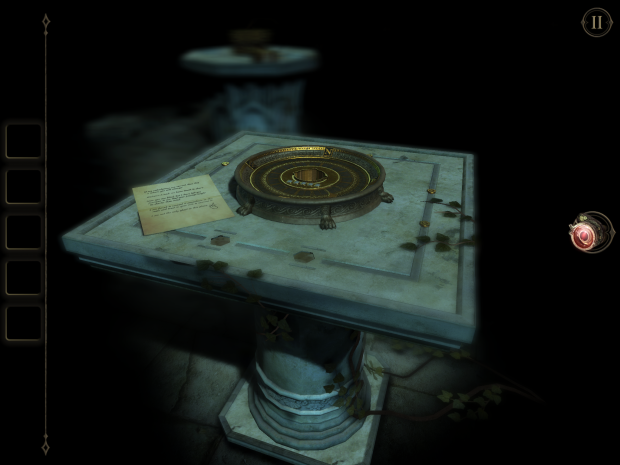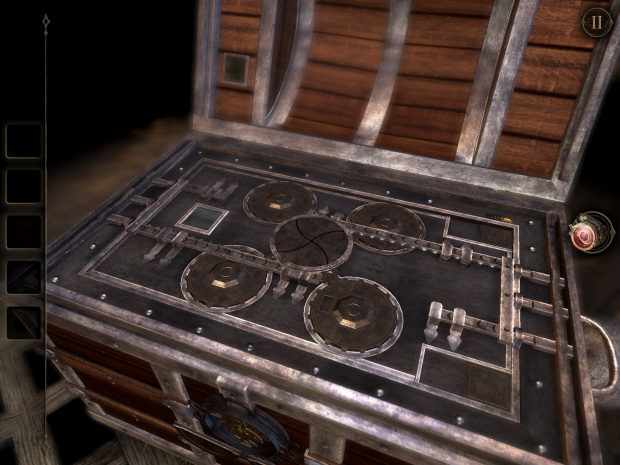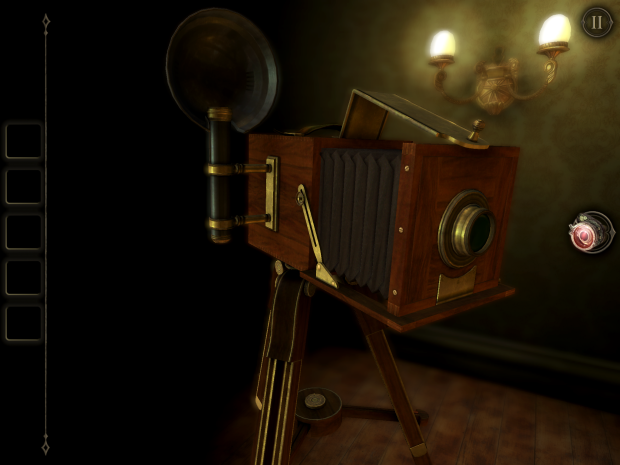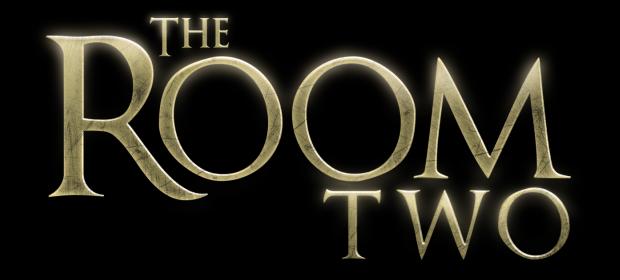How do you improve on a game that feels like it justifies an entire platform as a gaming device all by itself? Because that’s what The Room did for me. It hammered home that iOS is a platform that requires attention through the simple fact then when a developer hones in on what makes it so unique in the first place, well, greatness happens.
In fact, if you’ll indulge me ever so slightly, Fireproof Games aren’t alone in having the secret sauce. No, the magic touch is shared by developers such as Somethin’ Else (Papa Sangre) and Simogo, who made the stunning Year Walk and Device 6 and released both in the same year.
But The Room was the game that first truly awakened the iOS fan in me, and The Room Two has the power to reinvigorate and regenerate even the most fed up, lapsed tablet gamer. The Room Two is breathtakingly clever, creating a tactile feeling that only this type of game can achieve.
 That connected feeling is acchieved in such a simple way: making us turn a key, open a box, use a screwdriver to take something apart; executed so well, almost every element feels like a treat to interact with. Despite this being a sequel, despite in many ways it being the extrapolation of an idea to its natural conclusion, it feels fresh and hosts so many wow moments, whilst retaining a truly tricky puzzle nature. In fact, at times it’s a little too taxing for its own good.
That connected feeling is acchieved in such a simple way: making us turn a key, open a box, use a screwdriver to take something apart; executed so well, almost every element feels like a treat to interact with. Despite this being a sequel, despite in many ways it being the extrapolation of an idea to its natural conclusion, it feels fresh and hosts so many wow moments, whilst retaining a truly tricky puzzle nature. In fact, at times it’s a little too taxing for its own good.
A handy hint system will flash when you’ve spent too long without new interaction. Starting as a simple nudge (“Hey, have you looked in that box?)” and ending with “For God’s sake, turn this to make that happen!”, you won’t resort to them often enough to be concerned about the overall difficulty – the game is incredibly linear – but you will need them as you progress through The Room Two. In truth, the hint system is a little too eager to help you out, so turn it off if you want a more pure experience.
But to answer the opening question, you improve upon the original idea by adding more of everything: more content, more rooms, more ideas, more ambition. Every puzzle feels never-ending (in a good way), and just when you think you’ve cleared a chapter, more tricks are pulled from The Room Two’s wonderful sleeve. I lost count of the amount of times I thought I’d seen all there was to see, only for a new secret panel to be revealed, or a previously hidden-by-darkness table appeared.

While I won’t spoil any of the puzzles here, it’s worth mentioning that The Room Two teases you at every turn. There are moments of fear – most people don’t like what they can’t see, and darkness is a motif throughout – caused by flashing imagery and clever use of audio, and each chapter pushes forward the overall narrative, one of the poor sap stuck in this room, having to unravel mysteries to go further. However, don’t expect the story to be obvious, there is clearly more to this universe than we’re being told, and much of the story is seemingly purposeful in its vagueness.
Diminishing returns are an issue, though, because despite the constant level of intelligent design, after a while most of the actual interactions are things you’ve done multiple times before. The fact that there are multiple rooms with multiple tables – as opposed to the original game’s more narrow scope – means that you will need to keep your wits about you, which also forces leaning on the hint button more than I’d perhaps like, but there is no moment that you won’t enjoy, perhaps aside from the eventual end of each puzzle room, which tasks you with lining up a glyph-type image before progressing to the next room.
 As per the first game, The Room Two looks stunning. You’d expect nothing less, but because you are examining objects in the most minuscule detail, it has to be clean and clear – and it’s a case of mission accomplished there. The soundtrack is also rather well done, offering a Victorian-feeling that matches the environments and helps to create atmosphere. Each chapter is reasonably lengthy and some are better than others (a particular highlight is the séance chapter), but they are all rewarding in their own way.
As per the first game, The Room Two looks stunning. You’d expect nothing less, but because you are examining objects in the most minuscule detail, it has to be clean and clear – and it’s a case of mission accomplished there. The soundtrack is also rather well done, offering a Victorian-feeling that matches the environments and helps to create atmosphere. Each chapter is reasonably lengthy and some are better than others (a particular highlight is the séance chapter), but they are all rewarding in their own way.
VERDICT: Playing the first game isn’t required (but it is recommended, and the now-added epilogue links the games well) and the linearity means that on most puzzles, you can get stuck but you’ll find the only solution eventually by luck, judgement, or help from the hint button. But you can’t help but marvel at a developer that absolutely understands the platform they are designing for. The Room Two is an essential title that every gamer should make it their mission to experience.

SUPERB. This is the mark of greatness, only awarded to games that engage us from start to finish. Titles that score 9/10 will have very few problems or negative issues, and will deliver high quality and value for money across all aspects of their design.
Review code provided by publisher.





